Maui island

State Cemeteries & Memorials
1. Makawao Veterans Cemetery
The Makawao Veterans Cemetery is a 10-acre site located in Upcountry Maui. Entry into the cemetery is from Baldwin Avenue. The cemetery was established on January 29, 1951, to accommodate Maui veterans. Upgrades and renovations include a columbarium, restrooms, and a committal shelter.
The AJA Veterans Club, Maui Chapter, dedicated an 18 inches by 24 inches bronze plaque mounted on moss rock veneer located adjacent to the committal shelter and a 5 feet by 4 feet granite headstone mounted in concrete to honor the MIA from WWII and the Korean War Veterans.
This cemetery is maintained by the County of Maui, Department of Public Works.
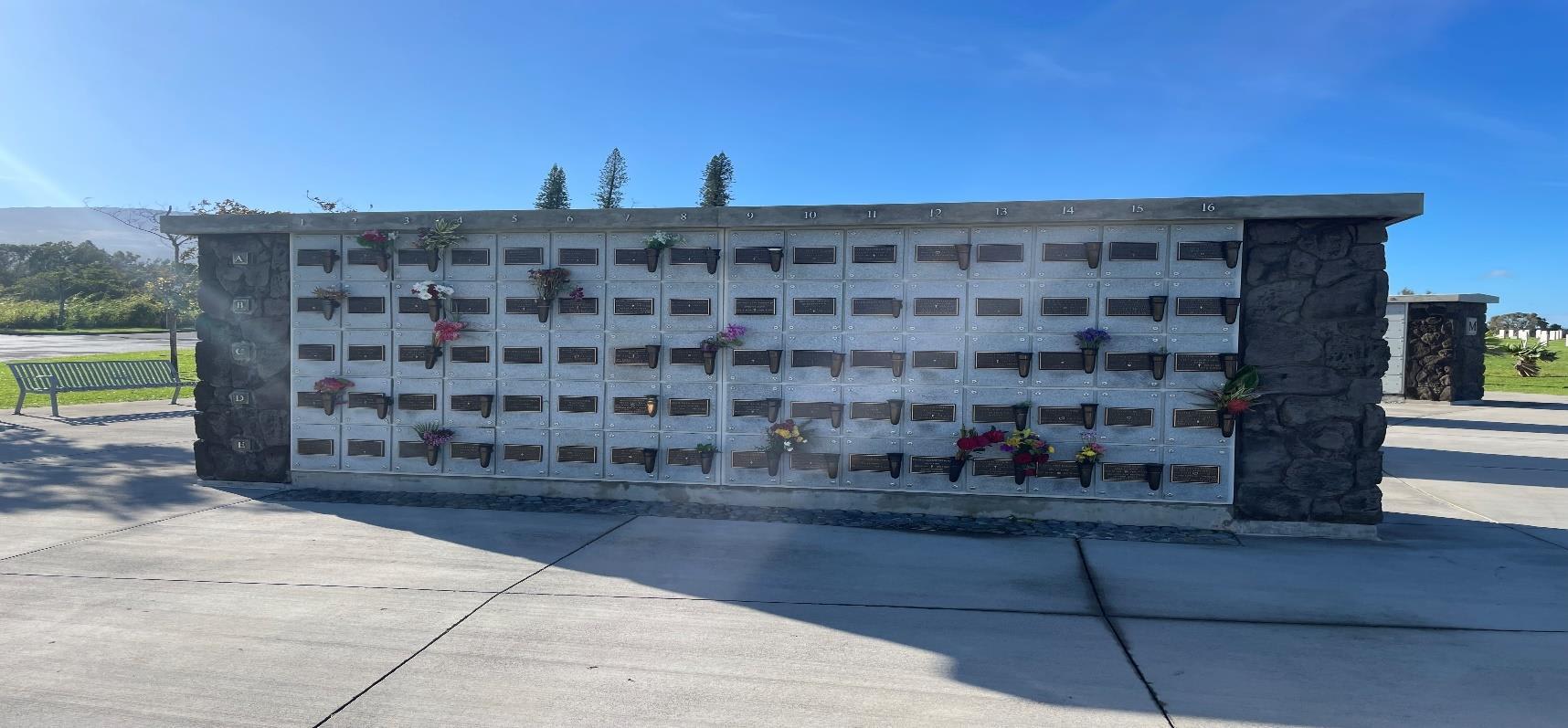
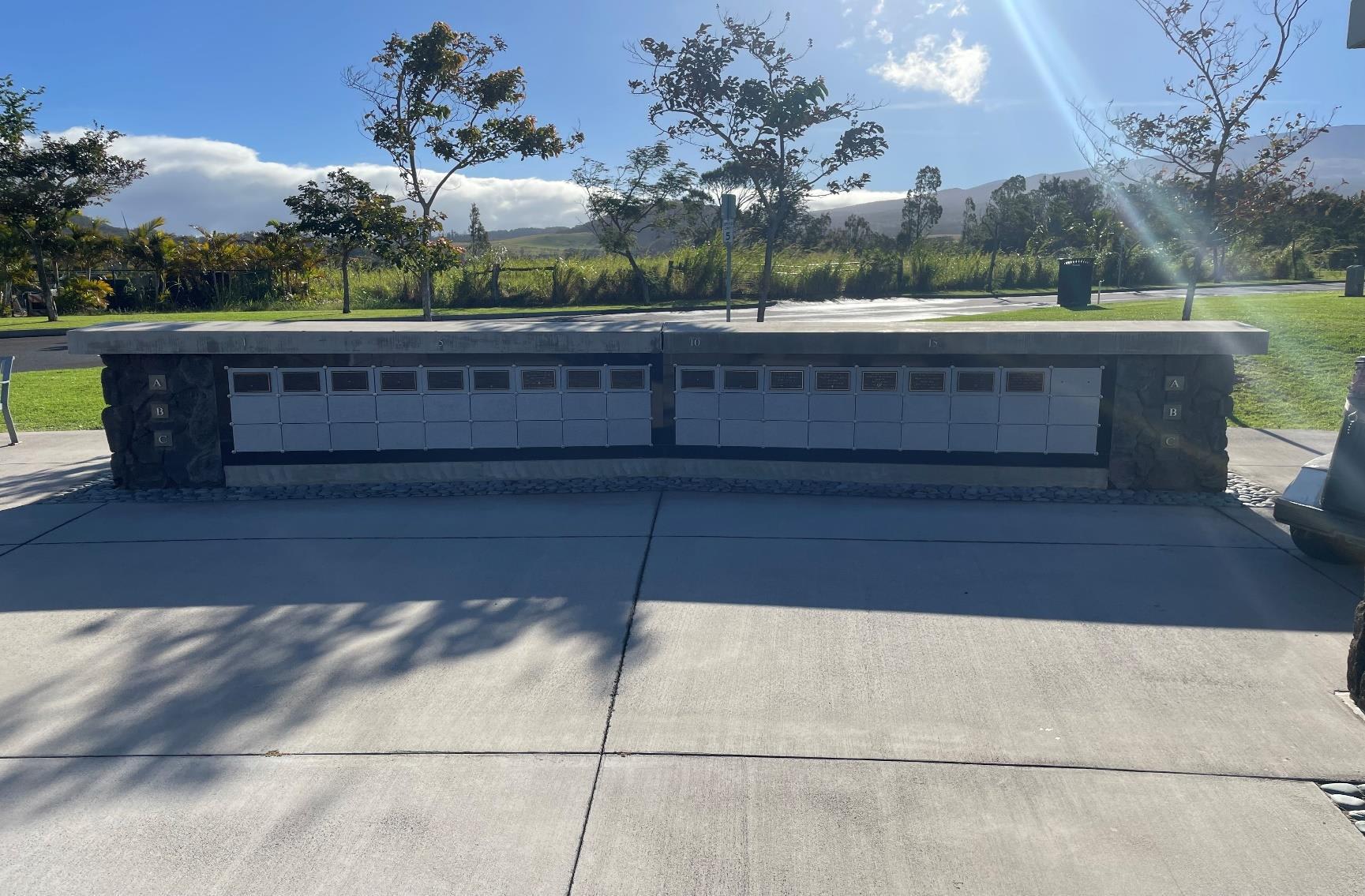
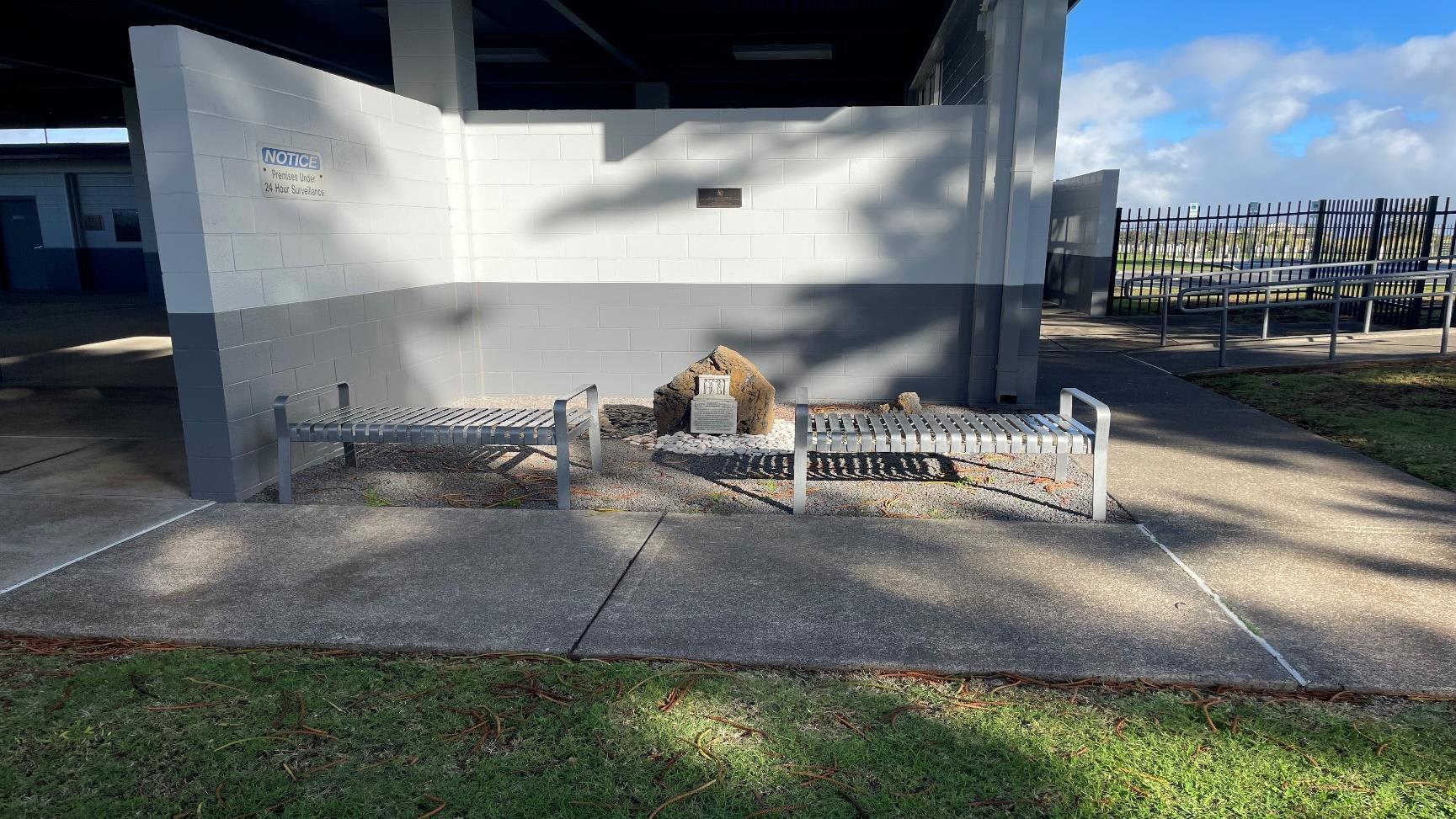
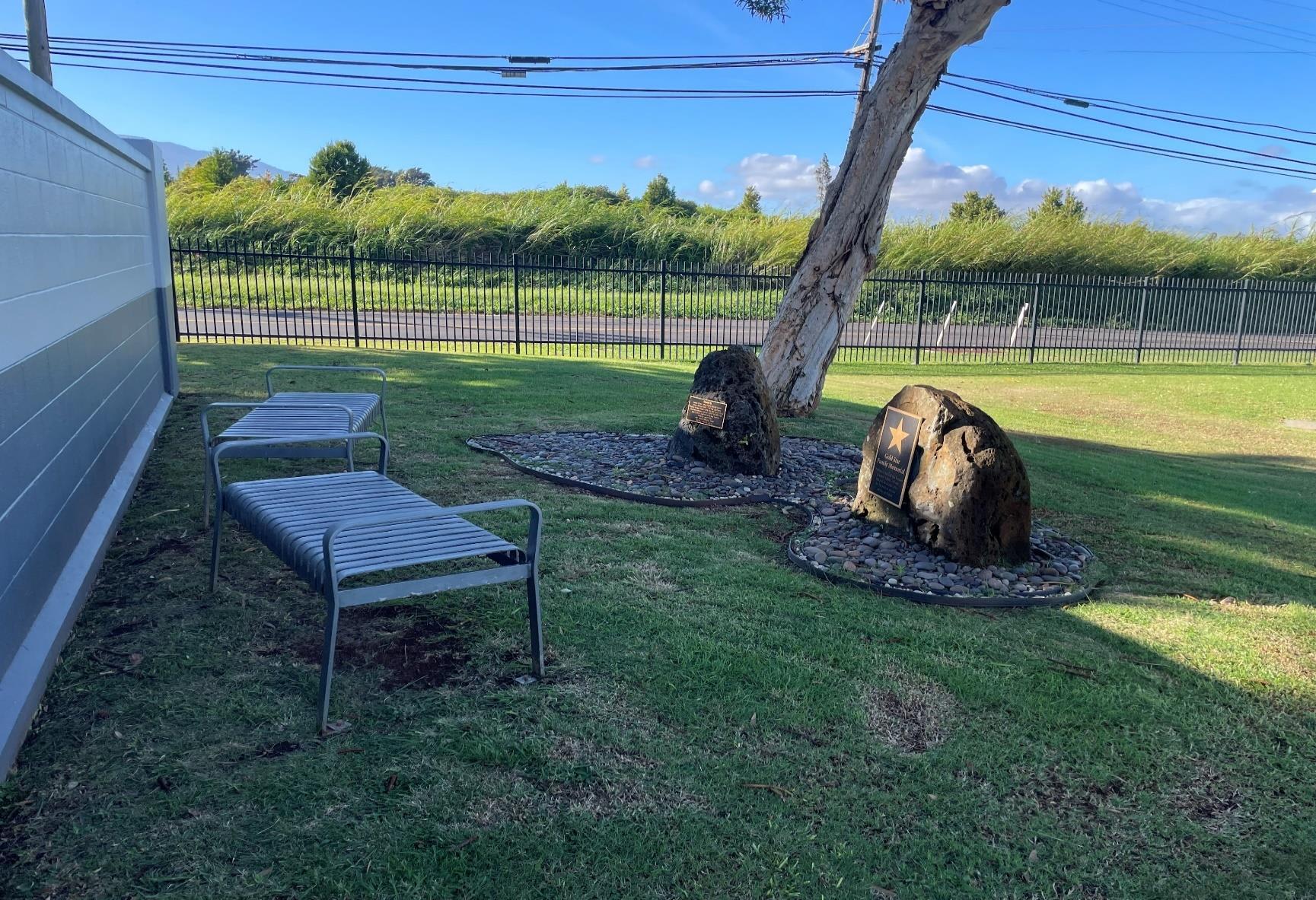
Haleki’i-Pihana Heiau State Monument
Overlooking the Wailuku-Kahului area, this ancient temple complex is significant for its role in the wars of the late 18th century.
- Rededicated war temple: Maui's last ruling chief, Kahekili, rededicated the temples (heiau) for the war god Kū, a common practice among aliʻi (royalty) during periods of intense warfare.
- Ceremonial sacrifices: Following his defeat of Maui's forces, Kamehameha I is thought to have performed human sacrifices at Pihana Heiau to pay tribute to his own war god.
- Modern access: The site is a state monument with the lava rock temple foundations still visible. It offers panoramic views of Central Maui.
Other Battle Sites, Cemeteries & Memorials
Battle of Kalaeʻiliʻili
For over two centuries, between the fight between the children of Chief Piʻilani and the middle of the 18th century, Waiheʻe appears to have been relatively quiet, and the stories of those years are remembered only by the kamaʻāina of the land of the kamakani kili ʻoʻopu.
The fertility of the ʻāina, and the abundant water of Waiheʻe witnessed a growing population, as seen by the expansion of the system of loʻi kalo from Mauna Alani and Kalepa stream deep into Waiheʻe valley. During this time, the entire district of Wailuku, the Nā Wai ʻEha or the four rivers of Maui, grew into what later generations would understand as the most productive loʻi kalo lands in the entire archipelago. This ʻāina mōmona did not go unnoticed by the chiefs who sought to expand their own land holdings.
According to one kūpuna, the next chief who spent many of his days in Waiheʻe was the high chief of Maui, Kamehamehanui (not to be confused with Kamehameha the Great, who later became mōʻī, or king of Hawaiʻi), who ruled Maui for twenty-nine years. Although we are not sure how much time Kamehamehanui spent in Waiheʻe, undoubtedly, it was the abundance of the land that attracted him and his entire chiefly entourage to this wahi pana.
During the reign of Kamehamehanui, a high ranking chief originally from Hawaiʻi Island arrived on Maui, Keʻeaumoku Pāpaiahiahi. Keʻeaumoku, the son of Keawepoepoe and Kumaʻaikū, two very high ranking chiefs from Hawaiʻi Island, arrived on Maui in the early 1760s with his mother after this young chief led a rebellion against Kalaniopuʻu, the high chief of Hawaiʻi Island.
When Kamehamehanui passed away around 1766, Keʻeaumoku married his widow, Nāmāhana, an act that was understood by Kahekili, the new high chief of Maui, as a form of rebellion. Understandably, this marriage deeply angered Kahekili who, by tradition, should have married his brother’s widow.
For some time, Nāmāhana and Keʻeaumoku lived in Kapoho village, aware of all that was happening across the island, but likely not involved with the island’s day-to-day governance. Nāmāhana had inherited Waiheʻe from her mother, Haʻaloʻu, and from what we can tell, in those early days of their marriage, Keʻeaumoku and Nāmāhana enjoyed the bounty that Waiheʻe offered. In addition to the kalo it produced, Waiheʻe was also known as a place with abundant fish and heʻe (octopus).
At some point, a dispute arose between Keʻeaumoku and a lower ranking warrior-chief who lived at Kaʻapoko in Waiheʻe Valley named Kamahana (sometimes written as Kahahana). This dispute seems to have had its origin in the fair distribution of fish, as well as access to the best fishing grounds of Waiheʻe. Soon after, Kamahana shared his anger and frustration with others, gathering around him a number of discontented lesser chiefs and warriors.
Kamahana’s anger quickly boiled over, and he decided that an uprising against Keʻeaumoku was the only way to permanently overcome this injustice. From the accounts of Samuel Kamakau and others, the battle began with Kamahana ceremonially putting on his ʻahu (feather cloak) and mahiole (helmet), gathering the warriors loyal to him, and marching on Niukukahi in Waiehu. Once there, Namahana and his warriors killed three men loyal to Keʻeaumoku before marching to Waihe’e to exact their revenge on this interloper from Hawaiʻi Island.
Kamahanaʻs arrival at Waiheʻe marked the beginning of Ke Kaua o Kalaeʻiliʻili, The Battle of Kalaeʻiliʻili; a relatively minor battle with significant implications for the future of Hawaiʻi. Today, Kalaeʻiliʻili is a prominent point along the Waiheʻe coast directly in front of Kapoho village at what I often think of as the piko of Waiheʻe Refuge.
Maui Island War Memorials
A. National Cemeteries & Memorials
(No additional national cemeteries listed here; refer to local state cemeteries.)
B. State Cemeteries & Memorials
1. Makawao Veterans Cemetery
The Makawao Veterans Cemetery is a 10-acre site located in Upcountry Maui. Entry is from Baldwin Avenue. Established on January 29, 1951, the cemetery honors Maui veterans. Renovations include a columbarium, restrooms, and a committal shelter.
The AJA Veterans Club, Maui Chapter, dedicated a bronze plaque (18×24 inches) mounted on moss rock near the committal shelter and a granite headstone (5×4 feet) honoring MIAs from WWII and the Korean War. The cemetery is maintained by the County of Maui, Department of Public Works.
2. Haleki’i-Pihana Heiau State Monument
Overlooking Wailuku-Kahului, this ancient temple complex played a key role in the late 18th-century wars.
- Rededicated war temple: Maui's last ruling chief, Kahekili, rededicated the temples (heiau) for the war god Kū.
- Ceremonial sacrifices: Kamehameha I likely performed sacrifices at Pihana Heiau after defeating Maui’s forces.
- Modern access: The lava rock temple foundations remain visible. Visitors can enjoy panoramic views of Central Maui.
Other Battle Sites, Cemeteries & Memorials
Battle of Kalaeʻiliʻili
- Context: A minor but historically significant conflict in Waiheʻe Valley between Keʻeaumoku Pāpaiahiahi (from Hawaiʻi Island) and Kamahana, a local chief.
- Significance: Forced Keʻeaumoku and Namahana to flee Maui, setting the stage for Kaʻahumanu’s later role in Hawaiian unification.
- Battle style: The Makawalu (squad-based) formation was used; warriors employed spears (ihe, pololū), slings (maʻa), and daggers (pāhoa, lei niho manō).
Battle of Kalaeoka’ilio (1776)
- Participants: Hawaiʻi Island forces under Kalaniʻōpuʻu vs. Maui forces under Kahekili II.
- Outcome: The Maui forces initially prevailed; Kalaniʻōpuʻu later planned revenge but was defeated again.
Battle of Koko O Na Moku (c. 1738)
- Conflict: Civil war for control of Maui after the death of Chief Kekaulike.
- Combatants: Brothers Kamehamehanui and Kauhi.
- Outcome: Kamehamehanui emerged victorious, bringing peace to Maui for several years.
Iao Valley State Monument – Battle of Kepaniwai (1790)
- Combatants: Kamehameha I (Hawaiʻi Island) vs. Kalanikūpule and Maui chiefs.
- Significance: A bitter and bloody battle known as “Battle of the Dammed Waters of ʻĪao” due to corpses blocking the river.
- Tactics: Kamehameha employed cannons (operated by John Young and Isaac Davis) alongside his skilled warriors.
- Aftermath: Chiefess Kalola and granddaughter Keōpūolani escaped. Maui remained under Kahekili II, who later acquired cannons.
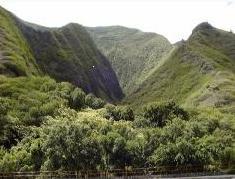

Battle of Kepuwahaʻulaʻula (Red-Mouthed Gun, 1791)
- Event: Maui’s Kahekili II attempted to invade Hawaiʻi Island but was defeated in a naval engagement.
- Impact: Highlighted alliances among islands and ongoing conflict between Maui and Hawaiʻi Island.
Kaʻuiki Head (Hāna)
- Historical significance: A strategic cinder cone fortress in Hāna, held for over 20 years by Kalaniʻōpuʻu from Hawaiʻi Island.
- Battles:
- Multiple attacks by Maui’s King Kahekili and Oʻahu allies.
- Battle of Kalaeokaʻilio (1776): Maui forces recaptured the fort in sand dunes of Wailuku.
- 1790: Kamehameha’s forces fought months to capture the well-provisioned fortress, ultimately destroying the water supply.
- Other significance: Birthplace of Queen Kaʻahumanu, influential wife of Kamehameha I.
Key Historical Notes
- Warfare in Maui: Battles often involved spears, daggers, slings, and strategic formations like kahului (crescent-shaped phalanx) or makawalu (squad-based) formations.
- Political implications: Many conflicts shaped the eventual unification of the Hawaiian Islands under Kamehameha I.
- Cultural context: Heiau (temples) and strategic lands were central to both spiritual and military endeavors.
Message Us
Connect with us to explore diverse programs that celebrate our military heritage. Whether planning a visit or needing information, we’re excited to assist you. Reach out today!
